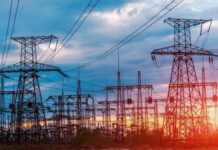Poland’s government signed on Wednesday a letter of intent with lobby groups and industry to collaborate on developing offshore wind farms in the Baltic Sea as the country seeks to reduce its reliance on coal.
Poland, which generates almost 80 per cent of its electricity from coal, is under European Union pressure to reduce carbon emissions and the government hopes the planned Baltic wind farms, followed by a nuclear power station, will help.
“This is a huge economic opportunity,” Climate Minister Michal Kurtyka told a press conference before he and other ministers signed the letter of intent with lobby groups including the Polish Wind Energy Association (PWEA) and Polish Offshore Wind Energy Society.
Poland expects to have its first wind farm production in 2025. It sees the total offshore wind capacity at 10 gigawatts (GW) by 2040.
“We welcome the commitment of the ministers, which shows a shared pursuit of these goals…Poland has a chance to become a leader in the Baltic Sea with a potential of up to 28 GW by 2050,” said Janusz Gajowiecki, the president of the Polish Wind Energy Association (PWEA).
He added that potential investment in Polish offshore wind, valued at around 130 billion zlotys ($32.7 billion), could become a key driver for the economy. The industry says that the construction of 10 GW of offshore wind farms will create over 60,000 jobs and add 54 billion zlotys to the economy.
State-run PGE, which is Poland’s biggest power producer, mostly from lignite, plans to build three Baltic wind farms with a total capacity of 3.5 GW. Other state-run groups are also investing, including Enea and PKN Orlen .
The project is attracting foreign companies too, including Denmark’s Orsted and Spain’s Iberdrola.





































